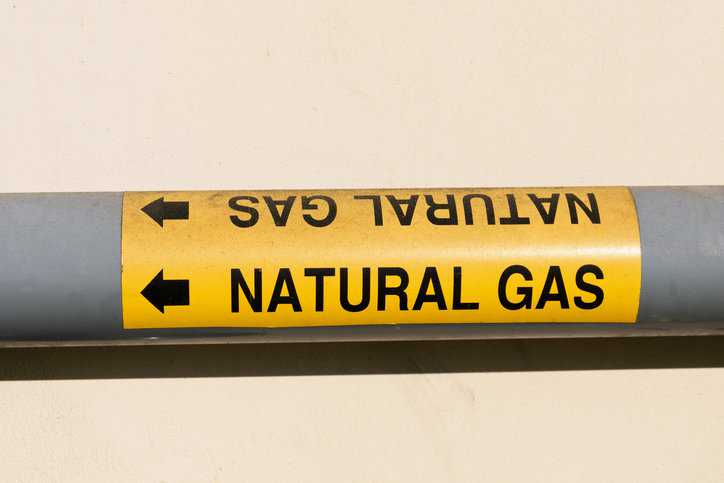Identification of Piping Systems Through ASME A13.1-2023

By the 1920s, piping was essential for conveying fluids, and many large companies had developed their own color scheme for identifying piping systems and components. These schemes, unfortunately, lacked universality. People changing employment from one plant to another heightened the chances for error, confusion, or inaction during emergencies. To combat this issue, a scheme for the identification for piping systems was developed. Today, this exists as ASME A13.1-2023.
What is ASME A13.1-2023?
The scheme outlined in ASME A13.1-2023 covers the identification of contents of piping systems. In doing so, it helps establish a common system to identify hazardous materials conveyed in piping systems and the materials’ hazards when released in the environment. This helps reduce accidents that result from a lack of uniformity with piping markings (e.g. mistakes in turning valves or disconnecting pipes at the wrong time or place), therefore limiting injuries to personnel and damage to property.
The ASME A13.1-2023 American National Standard outlines legends for identifying the components of a piping system (including content descriptions like “HOT WATER” OR “PROPANE”), color, placements, the type and size of letters, provisions for abandoned piping, and GHS (Globally Harmonized System of Classification and Labelling of Chemicals) pictograms.
ASME A13.1-2023 is recommended for the identification of piping systems in industrial, commercial, and institutional installations, and in buildings used for public assembly. However, it does not apply to buried pipelines or electrical conduits. Existing piping identification schemes can be considered under this standard if they are described in writing or if employees are trained as to the operation and hazards of the piping systems.
History of Piping
Piping has transported fluids for millennia, first emerging to support drinking water and sewage. The first sewage systems date back to the Indus Valley civilization, located in modern Pakistan and northwestern India, but these consisted of bricks joined by water-tight masonry.
Piping, however was a component of ancient Egypt. For example, in the remains of a pyramid in Abusir in northern Egypt, archaeologists excavated the remains of a sophisticated drainage system made of copper pipes. The pyramid served as the final resting place of King Sahure, the second King of Egypt’s 5th Dynasty, who ruled from 2517 to 2505 BCE. Experts speculate that these pipes were used to drain well water that was hand-carried into the temple to bathe the late king’s statues.
Jumping ahead to ancient Rome, an intricate waterworks system was in place, guided, of course, by the Roman aqueducts, a channel that transported water to populated areas across territories. In those populous regions, lead pipes delivered channeled spring water into the home.
In recent history, the Industrial Revolution saw a swelling world population and rising urbanization, necessitating the need for better sanitation and driving progress in plumbing systems in much of the world. Around this same time, oil and similar industries expanded as well, seeing a burgeoning of piping systems in factories and plants. This sort of growth, of course, was largely possible due to the heightened productivity to produce piping from the burst in industrialization.
The Need to Standardize a Scheme for Piping Markings
By the turn of the Twentieth Century, following the Industrial Revolution in the United States, rapid industrial expansion made it clear that there needed to be a scheme for uniform marking on piping systems.

In 1908, an article on “Identification of Power House Piping by Colors” was read at a meeting of The American Society of Mechanical Engineers. Similar articles made appearances at other important meetings over the next decade, and numerous other published papers pointed out the need for a color scheme for pipelines, with reports made to various committees.
Unfortunately, around this time, while many large companies did create their own schemes, little thought was given to the standardization of pipe colors.
The American Standards Association (the former name of ANSI) organized the Sectional Committee on the Identification of Piping Systems in 1922. The work of this committee culminated in the initial publication of the scheme for the identification of piping systems in 1928.
Since then, this standard has been reviewed periodically, and either revised or reaffirmed to remain current and become today’s ASME A13.1-2023 standard. In the 1950s, it was revised to accommodate the tremendous number of different materials carried in pipes and was designated an American National Standard.
In its recent history, the 2015 edition of ASME A13.1 saw the addition of GHS pictograms and a definition for oxidizing.
Changes to ASME A13.1-2023
The current standard for the scheme for the identification of piping systems, ASME A13.1-2023, revises the 2020 edition. It underwent the following changes of note:
- Scope was revised.
- Each definition was revised.
- The Legend section was expanded.
- Both the Color section and Table 4.2-1, “Designation of Colors,” were revised.
- ASME A13.1 was changed from a periodic-maintenance to a continuous-maintenance Standard.
- New Figure 4.1-1, “Flow Direction to the Right,” new Figure 4.1-2, “Flow in Both Directions (Double-Headed Arrow),” and new Figure 4.1-3, “Flow in Both Directions (Arrows Pointed in Opposite Directions),” were added. Former Figure 4.1-1 is now designated Figure 4.1-4, “GHS Pictograms.”
ASME A13.1-2023: Scheme For The Identification Of Piping Systems is available on the ANSI Webstore.
Changes to ASME A13.1-2020
For any past users of this standard, updates to the 2020 edition, in revising the 2015 version, were also significant. Specifically, its changes included:
- Definition for “piping” was added, and other existing definitions—“combustible,” “fire quenching,” “flammable,” “oxidizing,” “piping systems,” and “toxic and corrosive”—were reworded and moved to single section for definitions.
- Paragraph 3.3 from ASME A13.1-2015, which is now 4.3, was expanded to specify that legends should applied close to valves or flanges, along with provisions for this and for when applying in this manner is impractical. To reflect this alteration, the paragraph, formerly “Visibility,” was renamed “Placement.”
- Former paragraph 3.5, “Unusual or Extreme Situations,” was revised in its entirety and replaced by 4.5, “Abandoned Piping.” This new section details identification for piping that has been abandoned, including the recommended color scheme and border.






